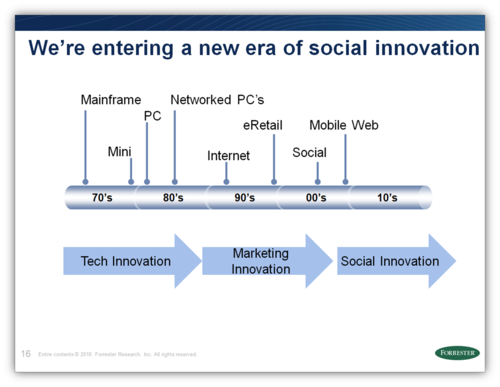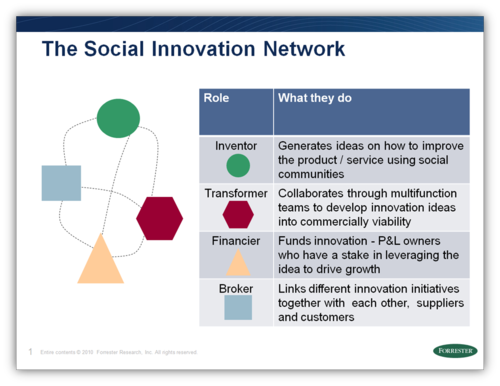The New Era Of Social Innovation
If the seventies and eighties were dominated by technology-led innovation, with IT in the driving seat, the nineties and two thousands was surely the period of marketing-led innovation. With the emergence of social computing as such a big influence on business, spreading rapidly beyond the sole domain of marketing, it seems we are entering a new era – the era of Social Innovation.

In this era, innovation will be driven by empowered customers and employees and IT and Marketing will need to join forces and collaborate as never before. The CIO and the CMO, IT and Marketing, will jointly power this new era of Social Innovation by bringing together their extensive domain expertise to create a Social Innovation Network.

The way I see it, true Social Innovation goes beyond customer interaction and idea generation, it requires a powerful and coordinated network of players to take customer-generated innovation and to test, scale and implement it. IT has a key role to play in this Social Innovation Network as the broker, helping to connect the network players and components and to establish the management, strategy and technological backbone of the network.

We can see many examples of social communities being used as the foundation of effective social innovation, with idea communities such as Starbuck’s “MyStarbuckIdea.com” and Dell’s IdeaStorm.com created to source customer-led innovation. Internal collaboration communities within the organizations are already being established. In the Social Innovation Network these collaboration communities are used by cross-functional innovation teams whose aim it is to sift, test and scale ideas. As new innovations are rolled out, social media continues to be used to engage the customer through blogs and community kudos to build word-or-mouth awareness.
I also explored this topic in a recent teleconference: Driving Growth Through Social Innovation Networks.
What do you think? Do you see a new era of Social Innovation upon us? Is your organization ready for a Social Innovation Network?
Next post: The secret of successful social communities: 4 social needs
Previous post: Forrester’s new blog policy creates quite a stir